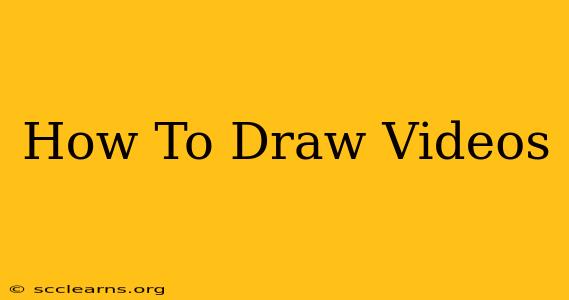Want to create captivating drawing videos that engage and inspire? Whether you're a seasoned artist or just starting, this guide will walk you through the process, from choosing your tools to mastering the editing techniques that will make your videos shine. Let's dive in!
Choosing Your Tools: The Foundation of Your Drawing Videos
The right tools can make all the difference. Here's what you'll need to get started:
1. Drawing Supplies:
- Pencils: Experiment with different grades (like HB, 2B, 4B) to achieve various shading and line weights.
- Pens: Fine liners, brush pens, and felt-tip pens offer diverse line styles and effects. Consider archival quality inks for longevity.
- Markers: Alcohol-based markers deliver vibrant colors and smooth blends. Water-based markers are great for softer effects.
- Paper: Choose paper suited for your chosen medium. Thick, smooth paper is best for pens and markers; textured paper works well with pencils.
- Eraser: A kneaded eraser allows for precise erasing and blending.
2. Recording Equipment:
- Camera: Your smartphone camera can work for simple videos. For higher quality, consider a dedicated webcam or DSLR camera.
- Lighting: Good lighting is crucial! Use a softbox, ring light, or natural light to avoid harsh shadows.
- Microphone: Clear audio is as important as clear visuals. A lavalier microphone or USB microphone will significantly improve audio quality.
- Tripod: A tripod keeps your camera stable, eliminating shaky footage.
Mastering the Drawing Process: Techniques for Engaging Videos
Creating a compelling drawing video involves more than just drawing. Here's how to make it engaging for your viewers:
1. Plan Your Video:
- Choose a subject: Select a subject you're passionate about and confident in drawing.
- Create a storyboard: Sketch out the key stages of your drawing, ensuring a smooth and logical flow.
- Time-lapse or real-time?: Decide whether to use time-lapse (faster) or real-time (slower, more detailed) recording.
2. Record Your Drawing:
- Set up your equipment: Ensure your camera is properly positioned and focused. Test your lighting and audio before you begin.
- Start recording: Begin with a clean shot of your supplies. Then, draw at a steady pace, explaining your process clearly and concisely.
- Add personality!: Let your personality shine through. Interact with your viewers, making the experience enjoyable.
3. Post-Production Editing:
- Video editing software: iMovie, DaVinci Resolve, Adobe Premiere Pro are just a few options.
- Speed adjustments: Adjust the speed to create time-lapses or slow-motion effects.
- Music and sound effects: Add background music and sound effects to enhance the mood and engagement.
- Text and annotations: Incorporate text overlays and annotations to highlight steps or provide additional information.
Promoting Your Drawing Videos: Reaching a Wider Audience
Creating amazing videos is only half the battle. Getting them seen is just as crucial.
1. Optimize for Search Engines (SEO):
Use relevant keywords in your video titles, descriptions, and tags. Think about what people would search for to find videos like yours.
2. Social Media Promotion:
Share your videos on platforms like YouTube, Instagram, TikTok, and Facebook, engaging with your audience in the comments.
3. Collaborate with Other Artists:
Collaborate with other artists to cross-promote each other's work and reach new audiences.
4. Engage with Your Audience:
Respond to comments and questions, fostering a sense of community around your videos.
By following these steps and consistently creating high-quality content, you can transform your drawing passion into a thriving online presence. So grab your pencils and cameras – it’s time to unleash your creativity!

